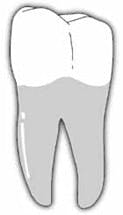Dental examinations of 4,800 South Australian ten- to fifteen-year-olds' permanent teeth reveal unexpected results–similar cavity rates whether they drink fluoridated water or not,reports Armfield and Spencer in the August 2004 Community Dentistry and Oral Epidemiology, reports the New York State Coalition Opposed to Fluoridation(NYSCOF).
Children sampled lived in fluoridated and nonfluoridated metropolitan and rural areas of the Australian state, South Australia. Collected rainwater, or tank water, is the main non-fluoridated (non-public) water source for 37percent of South Australians, 8percent drink bottled water. The public water supply is fluoridated in Adelaide, South Australia's capital city. The rest of South Australia is predominantly non-fluoridated, the authors report.
"The effect of consumption of nonpublic (non-fluoridated) water on permanent caries (cavities) experience was not significant," report Armfield and Spencer.
"It should be noted that, as discussed here, the drinking of bottled or tank water is neither immediately deleterious nor beneficial to oral health in and of itself," write the authors.
The American Dental Association asserts that fluoridation provides 15-35 percent cavity reductions in fourteen to seventeen-year-olds. But South Australian adolescents averaged less than 1 1/2 decayed, missing or filled permanent tooth surfaces (28 teeth have 128 surfaces), whether they drank fluoridated water or not.
Actually, many studies show, after fluoridation ceases, cavities decline. Others reveal fluoridation is ineffective at reducing tooth decay.
Recently the Australian study was used to blame fluoride-free bottled or tank water for increased cavity rates in primary or baby teeth. However, no decay data was included for one- to four-year-olds, the children with the most baby teeth. The studied group (5,100 five- to nine-year-olds) already shed primary teeth, perhaps some decayed. This places doubt on the validity of the conclusion that fluoridated water is linked to decreased primary-tooth cavities in this population sample.
"Cities waste millions of dollars fluoridating their water supplies; but the poor, malnourished or less educated still get the most cavities and the least dental care," says lawyer Paul Beeber, NYSCOF President.
"Dental health crises exist in many, fluoridated cities; while residents of non-fluoridated Wichita, Kansas and Long Island, N.Y., have better dental health than many fluoridated areas," says Beeber
Source: New York State Coalition Opposed to Fluoridation, Inc.


